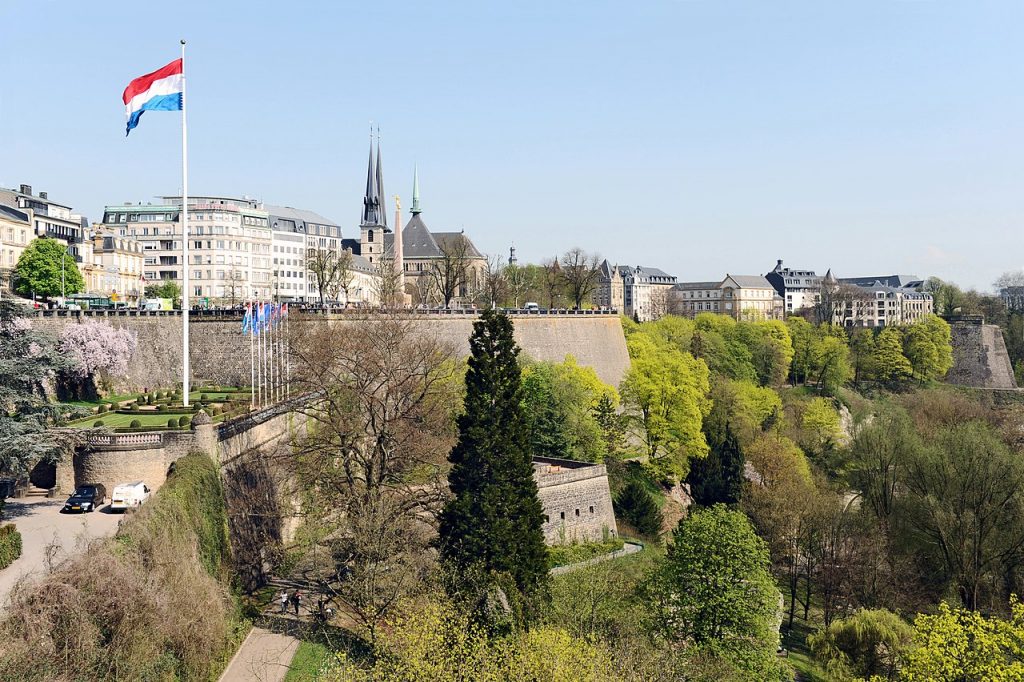
The first documents attesting to the presence of Jews in Luxembourg date from 1276, when an act mentions the Jewish religion of Henri de Luxembourg. The Jews have lived in the Pétrusse valley at the time.
Persecutions, leading in some cases to death, followed charges of poisoning wells during the plague epidemic of 1348. The Jews who survived these persecutions fled the country, from which they were officially expelled in 1391. Some families tried to stay in Luxembourg and Echternach, but, in 1532, the Edict of Charles V put an end to these hopes.
In the emancipatory spirit of the French Revolution, Luxembourg, conquered by France, applied imperial directives. Thus, on July 14, 1795, the discriminatory taxes imposed on the Jews and the geographic limitations were abolished by decree.
An early 19th century census shows that 75 Jews live in Luxembourg. A fairly young age average. They mainly came from villages of the Moselle and the Saar. People attracted by the hope of being able to work trade or crafts and live their religion freely.
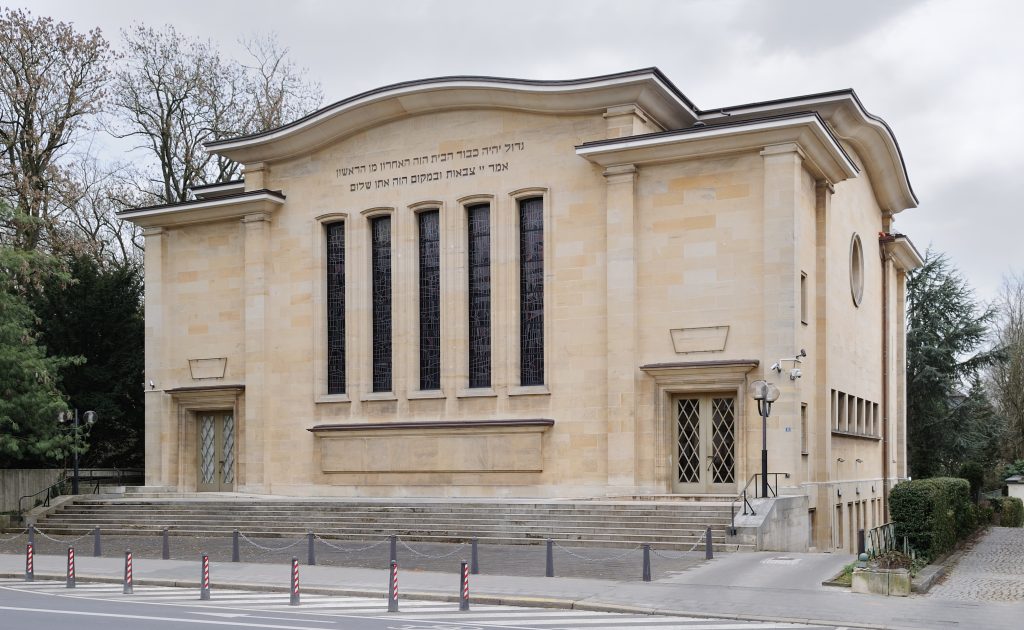
Two characters symbolized the roots of the Jews on Luxembourg territory. First, Jean Baptiste Lacoste (1753 – 1821), lawyer and former deputy of Cantal to the Convention. He was appointed prefect in Luxembourg and in the company of the Municipal Council and the Imperial Prosecutor, they attested to the Court of First Instance that “civil and political conduct was free from all reproach and that police surveillance encountered no complaint. particular against them, which is a constant testimony of their morality ”.
The other outstanding figure was Pinhas Godchaux. Born in 1771, and coming from a Messina family and having among his ancestors the Maharal of Prague, Pinhas Godchaux moved to Luxembourg in 1798. Gradually, he became the leader of the Jewish community, first attached to the Consistory of Trier then to the one of Maastricht.
From 1815, the Jews, coming mainly from Germany and Lorraine, settled successively in other cities: Arlon (city which was part of Luxembourg until 1839), Ettelbruck, Grevenmacher, Mertert, Dalheim, Echternach, Grosbous, Erpeldange, Frisange, Schengen and Esch.
The inauguration of the first synagogue in Luxembourg took place in 1823, in the rue du Petit Séminaire. Following the arrival of other Jewish families the regions of Alsace and Lorraine during the War of 1870, the community obtained the right to build a second synagogue, inaugurated on September 28, 1894 by Rabbi Isaac Blumenstein and the President of the Consistory Louis Godchaux welcoming on this day the high Luxembourg authorities. During this century, the towns of Ettelbruck, Mondorf and Esch also built a synagogue.
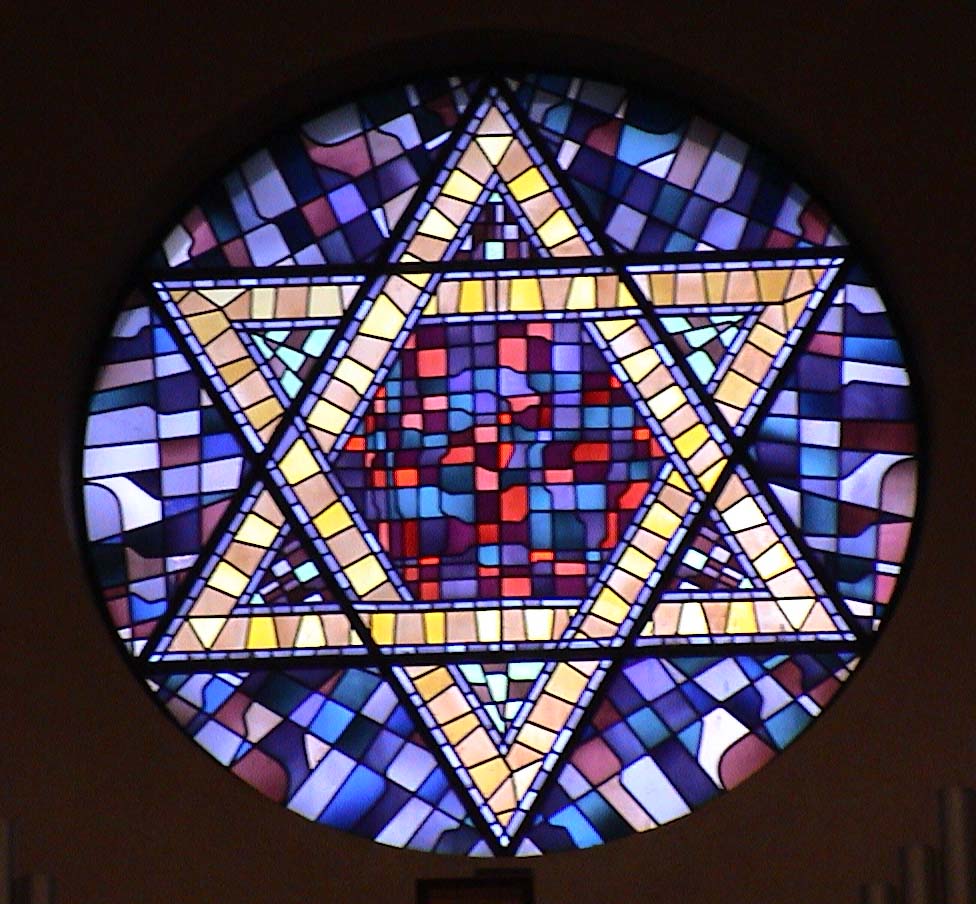
Clausen Malakoff , created in 1817, was the first Luxembourgish Jewish cemetery. It remained active until 1884, when the Bellevue cemetery was used instead. Ettelbruck (1881), Grevenmacher (1900) and Esch-sur-Alzette (1905) also allowed the creation of Jewish cemeteries.
Rabbi Samuel Hirsch was the great intellectual Jewish figure of that time. Trained in the eminent traditional community of Dessau, his liberal vision of Judaism, promoting the familiarity of the Jewish philosophical approach and contemporary societal thought, forced him to leave the institution. Although he was appointed Chief Rabbi of Luxembourg from 1843 to 1866, he failed to convince the traditionalist community of his reformist approach. He then shared it in Philadelphia, deeply inspiring the American liberal current.
At that time, Samson and Guetschlick Godchaux, the nephews of Pinhas, revolutionized the weaving trade and the condition of workers in the 19th century. An economic adventure that started in 1823 with two weaving looms in a shed on rue Philippe II. Moving to Schleifmuhl, the company developed its activity. Associated at the end of the century with the manufacturer Conrot, the family employed more than 2,000 workers, the majority of whom were in Schleifmuhl. The evolution of social condition is characterized by the construction of a workers’ village with small houses in Hamm. Far from being a dormitory town, this village had its own choir, a nursery and a nursery school as well as a Kayak club. It organized cultural events and above all a society of mutual aid, a kind of early social security experiment. The decline started after World War I. The factories closed in 1939. Emile Godchaux, descendant of the family and last director of the company, was deported at Theresienstadt and died there in 1942.
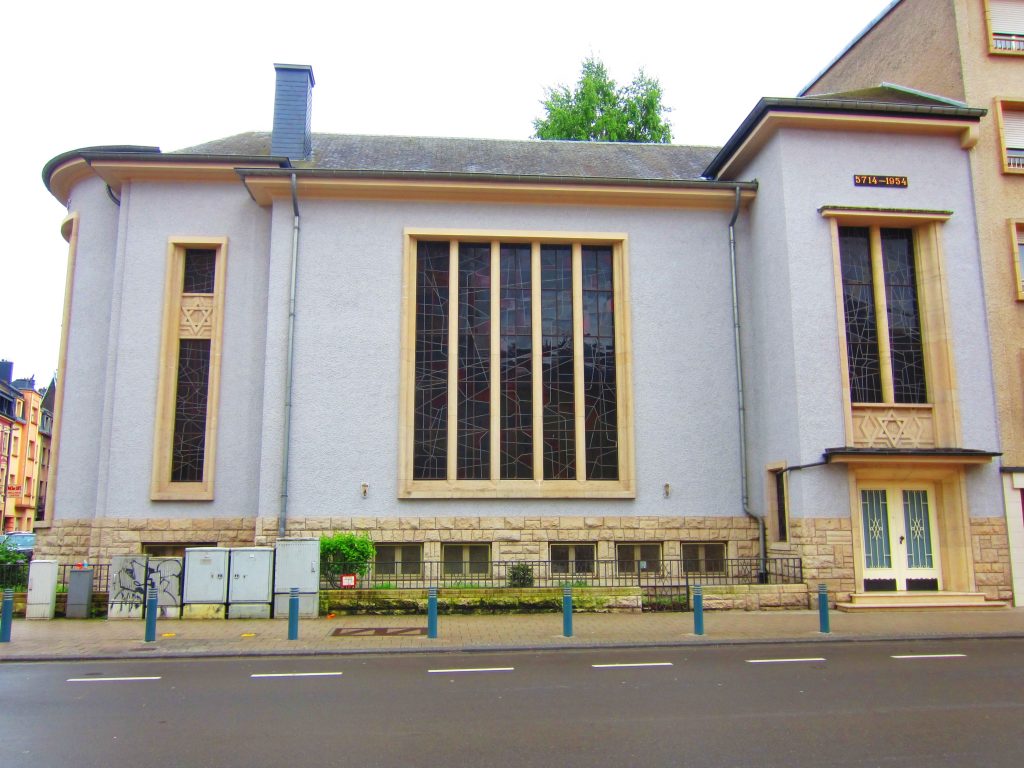
In the interwar period, many Jews from Eastern Europe fleeing poverty and anti-Semitism settled in the Grand Duchy, encouraged by the invitations to tender in the mining basins of the steel industry. This immigration continued with the arrival of Jews from Germany and Austria between 1935 and 1940, following the application of the Nuremberg laws.
On May 10, 1940, Luxembourg was invaded by the German army. Its 4,000 Jews were persecuted by the Nazi chief of civil administration sent by Berlin. The synagogues of Luxembourg and Esch were destroyed.
A period also marked by the courage of a handful of men who managed to organize the escape of the Jews from Luxembourg. Chief Rabbi Serebrenik was assisted by a Wehrmacht officer in charge of the passport office, Franz von Hoiningen Huene (François Heisbourg recounts this period in the book “This strange Nazi who saved my father”), the American charge d’affaires George Platt Waller and by the former president of the Consistory, Albert Nussbaum.
The latter organized a complex network from Lisbon, funded by the American organization JDC. The JDC enabled many Luxembourgish, but also Belgian, German and Eastern European Jews to embark for the United States, Brazil and other Latin American destinations such as Cuba, Jamaica or Venezuela.
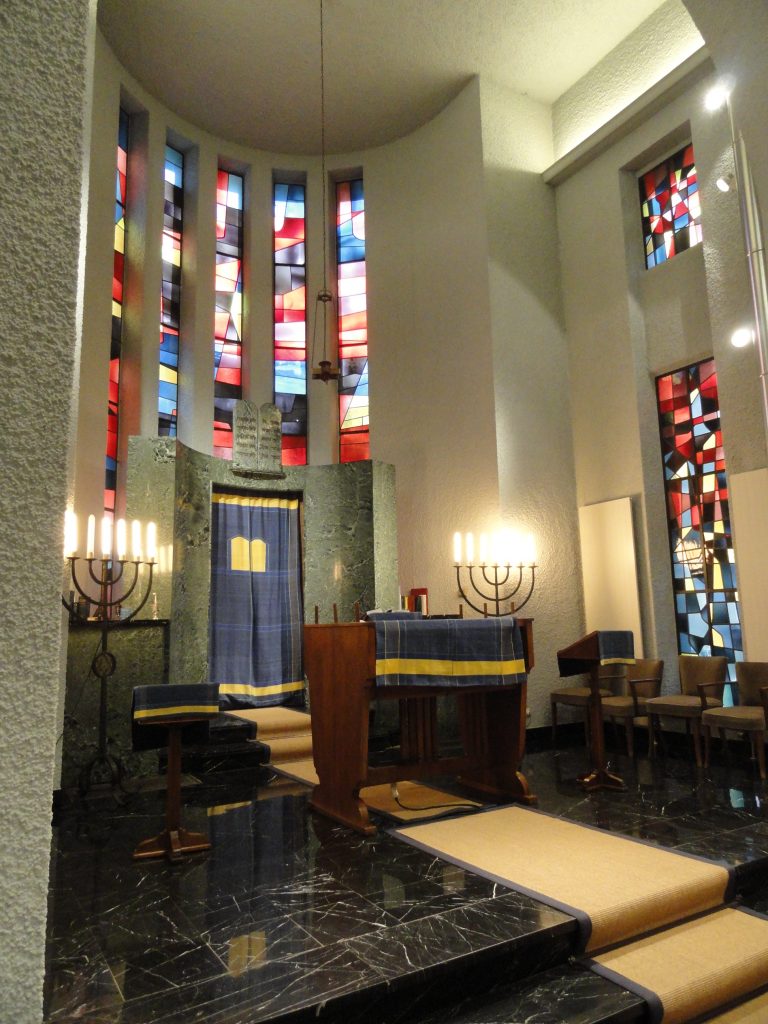
Victor Bodson, former Minister of Justice, saved Jews by helping them to flee the country. In particular by the Sauer river near where he lived and which marks the border between Germany and Luxembourg. For his courage, he was then named Righteous among the Nations.
Following the Liberation on September 9, 1944, the 1,500 Luxembourg Jews who survived rebuilt the community, thanks in particular to government assistance. Architects Victor Engels and René Maillet constructed a building that serves as both a place of worship and a community center.
The inauguration took place on June 28, 1953, in the presence of HRH the Grand Duke Jean, the high authorities of the City and the State and numerous rabbis among whom the Chief Rabbi of France Jacob Kaplan. Chief Rabbi Lehrmann consecrated the synagogue during a solemn ceremony presided over by the President of the Consistory, Edmond Marx.
A year later, Esch-sur-Alzette also hosts a synagogue . Of liberal current since 2008, it is located on the rue du Canal. A building made in the same style as the city synagogue built in 1899 and destroyed during the war. We particularly notice its large stained glass windows. The Esch synagogue celebrated its 70 years in 2024.
One can also visit the ancient synagogue of Mondorf-les-Bains which is today a cultural center. The Ettelbruck synagogue, ceded by the Luxembourg Consistory to the city of Ettelbruck which has made it a Culture and Meeting Center will soon house a Museum of Luxembourg Judaism.
Doctor Emmanuel Bulz greatly marked the contemporary period of Luxembourgish Judaism. Chief Rabbi from 1958 to 1990, he worked constantly for a rapprochement with the non-Jewish world and more particularly Luxembourg civil society. This, by sharing a knowledge of Judaism and a demythification of certain prejudices. Joseph Sayag succeeded him, then Alain Nacache, Chief Rabbi since 2011.
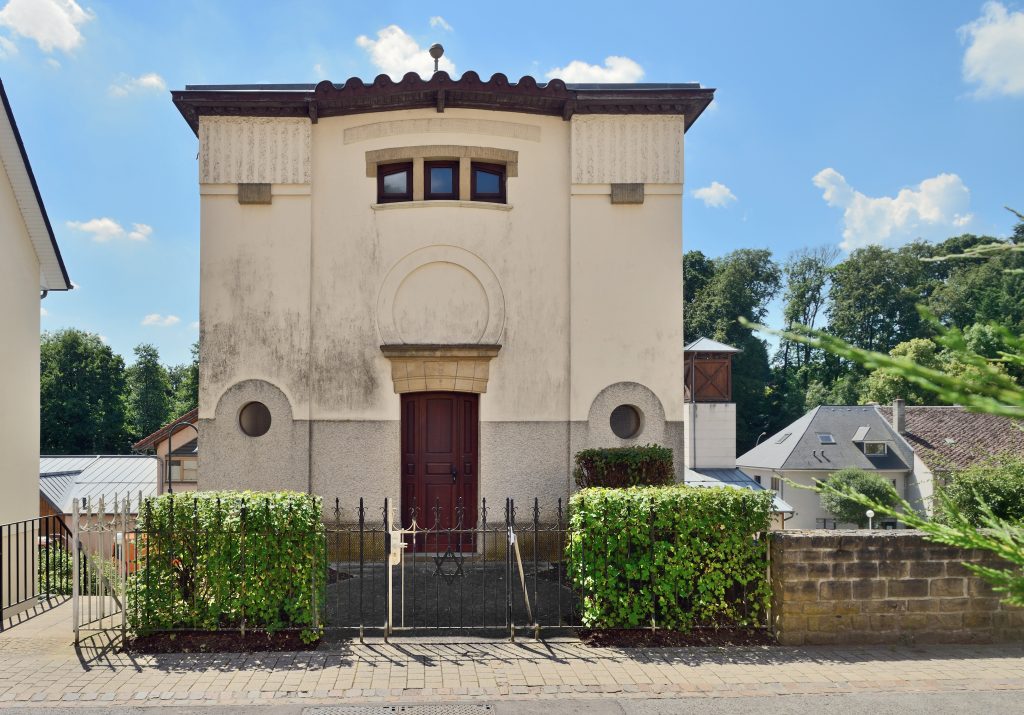
The work of historians such as Serge Hoffmann, Paul Dostert and Denis Scuto, as well as the political action of deputy Ben Fayot allowed a precise study of the history of the Luxembourg Jews during the Shoah. This resulted on February 10, 2015, in the presentation by Vincent Artuso of his report “The Jewish Question in Luxembourg, 1933-1941. The Luxembourg State faced with anti-Semitic Nazi persecution”.
On May 11, 2015, the decision was made to erect a monument to commemorate the victims of the Holocaust. A monument inaugurated on June 17, 2018 in the presence of the Grand Duke Henri, the Grand Duchess Maria Teresa and the national and municipal political authorities. The monument is located in the heart of the city. A memorial carved in pink granite by the artist and survivor Shelomo Selinger, close to the Gëlle Fra, symbol of the freedom and resistance of the Luxembourg people.
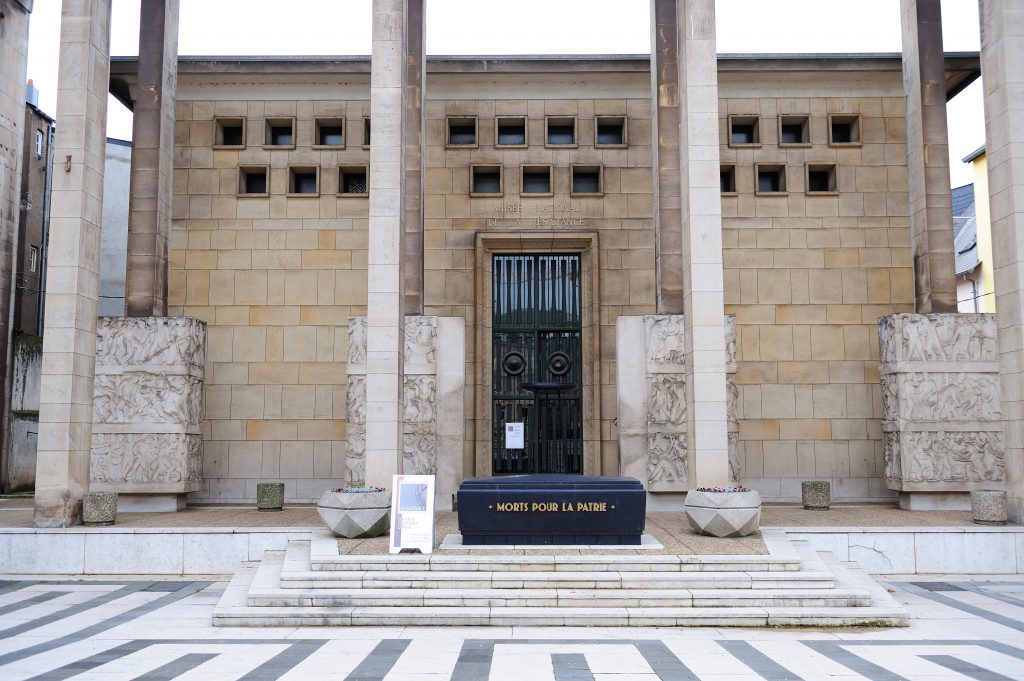
The Luxembourg Foundation for the Memory of the Shoah (FLMS) was created in 2018. A structure whose mission is to perpetuate the memory of the Shoah but also of all other crimes against Humanity. It also fights preventively by organizing programs against racism, revisionism and negationism. Historical revenge, since the site is located on the site of the former Gestapo headquarters.
Another interesting place to visit is the National Resistance Museum located in Esch. He retraces this history in Luxembourg during the war. Photos, objects and works of art are presented to the public. Renovations were carried out between 2018 and 2023. Since 2024, it has had a much larger surface area.
Interview of Claude Marx, former president of the Israelite Consistory of Luxembourg
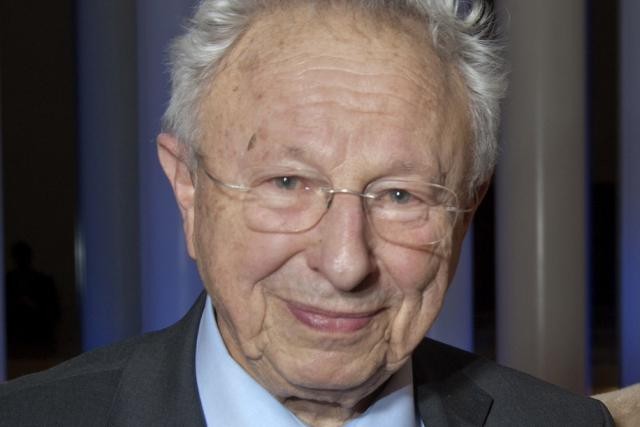
Jguideeurope: The Memoshoah Association devoted an exhibition to the rescue of Luxembourg Jews to Portugal and the Atlantic crossing. How was this rescue organized logistically?
Claude Marx: On May 10, 1940, during the invasion of the Grand Duchy of Luxembourg by the German army, the Jewish community was made up of 1,000 Luxembourgers and around 3,000 foreign Jews, mainly German and Austrian refugees. 45,000 people are fleeing the country, of which around 1,500 belong to the Jewish community. Many of these German, Austrian and stateless immigrants who have been unable to flee are going to great lengths to seek lighter skies.
An evacuation project was imagined in July by the association of several people: Chief Rabbi Robert Serebrenik, Albert Nussbaum, a Jewish merchant and President of the Consistory and Baron Franz von Hoiningen Huene, a German officer, notorious anti-Nazi and responsible from the passport office, could be finalized on August 8, 1940.
Between August and October, real and false visas bought very expensive by the Consistory allow, thanks to passes issued by von Hoiningen, several hundred refugees to cross France, then Spain, and finally succeed in Portugal from where they will have the possibility of embarking towards South America, the Dominican Republic or the United States.
A convoy that left on November 7, 1940 with 293 Jews was arrested in Vilar Formoso, a border town between Spain and Portugal, after the Portuguese border guards discovered on board uniformed and armed SS men. The convoy had to turn back to France after 10 days, stopped on a siding with a ban on passengers getting off.
Despite this incident, 7 other convoys were still organized, allowing several hundred refugees to escape death. On May 20, 1941, Chief Rabbi Serebrenik was informed by von Hoiningen that he was designated “for liquidation” as he soberly stated in his memorandum. On May 26, 1941, he accompanied a convoy bound for Lisbon and was able to embark for New York. On October 15, 1941, a last convoy of 132 people left Luxembourg. It was about time: on November 16, 1941, the first German transport to the East took 323 Jews deported to Litzmannstadt.
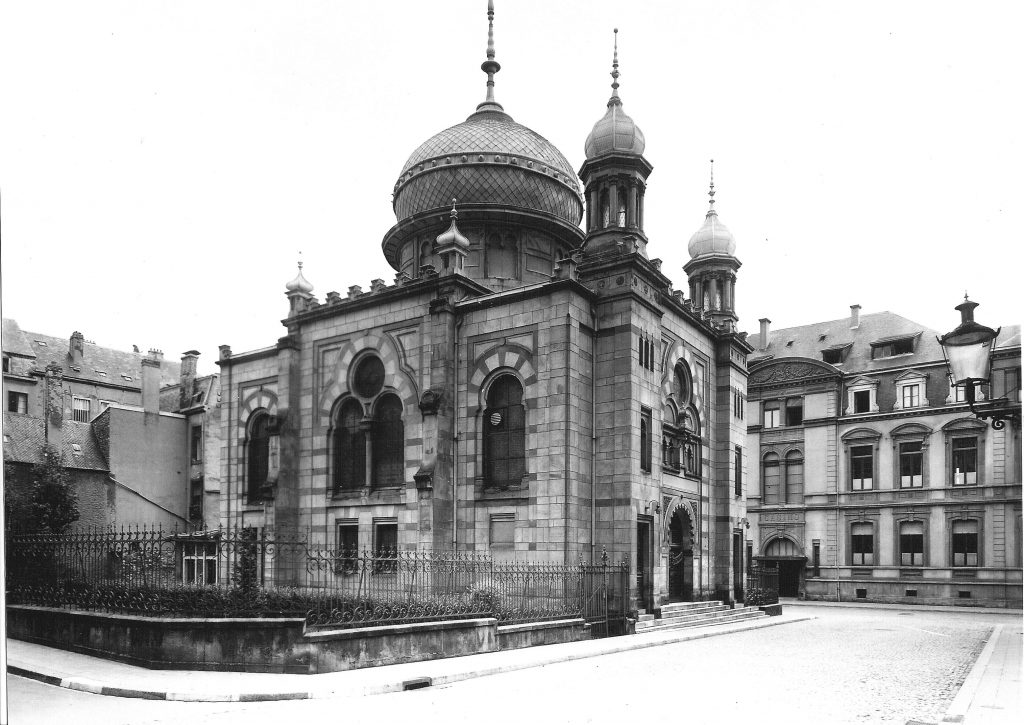
Do you think that there has been an important evolution in Luxembourg in the approach to the history of the Jews?
It was only after the conquest and annexation by France in 1795 of the Duchy, which then became the forest department, that the new legislation granting citizenship to the Jews allowed a few families to settle in the Luxembourg. A character from Lorraine, Pinhas Godchaux, intelligent and cultured, has the confidence, esteem and consideration of both the authorities and the Jewish community. His charisma and relationships will allow a rapid improvement in the economic conditions of the Jewish Community. As for the observations made on the morality of people, they are particularly flattering (“lives off his business as an honest man”, “deserves public confidence”, etc.). Chief Rabbi of Luxembourg in the 19th century, Samuel Hirsch, promoter of a line of radical reform of Judaism and who belongs to a Luxembourg masonic lodge, inaugurates a new period which will allow certain intellectuals, industrialists and financiers to tie through the masonry, constructive links across Europe. At the same time, the Godchaux family will build in Luxembourg an industrial empire inaugurating social laws favorable to the workers, which will considerably promote the attitude of Luxembourg society towards the Jews.
The successive rabbis after the war contributed significantly to the good relations between Luxembourg Civil Society and the Jewish Community. It is necessary to quote more particularly Charles Lehrmann, doctor in philosophy and licensees-es letters, convinced of the need to make known to his non-Jewish contemporaries what is Judaism, and who allowed by his radio talks to bring another look at the Jewish Community. From 1958, it was the Chief Rabbi Emmanuel Bulz who assumed the pastoral charge at the head of the Jewish Community of Luxembourg. Prodigiously cultivated, a great resistance during the war, Emmanuel Bulz concentrated his efforts on the Judeo-Christian dialogue. His speeches, lectures and radio broadcasts on a wide variety of subjects have earned him the respect and admiration of large sections of the Luxembourg population. Dr. Bulz’s commitment to a greater fraternity, his work for inter-religious dialogue are still very much present in Luxembourg’s memory and reflect on the Jewish community.
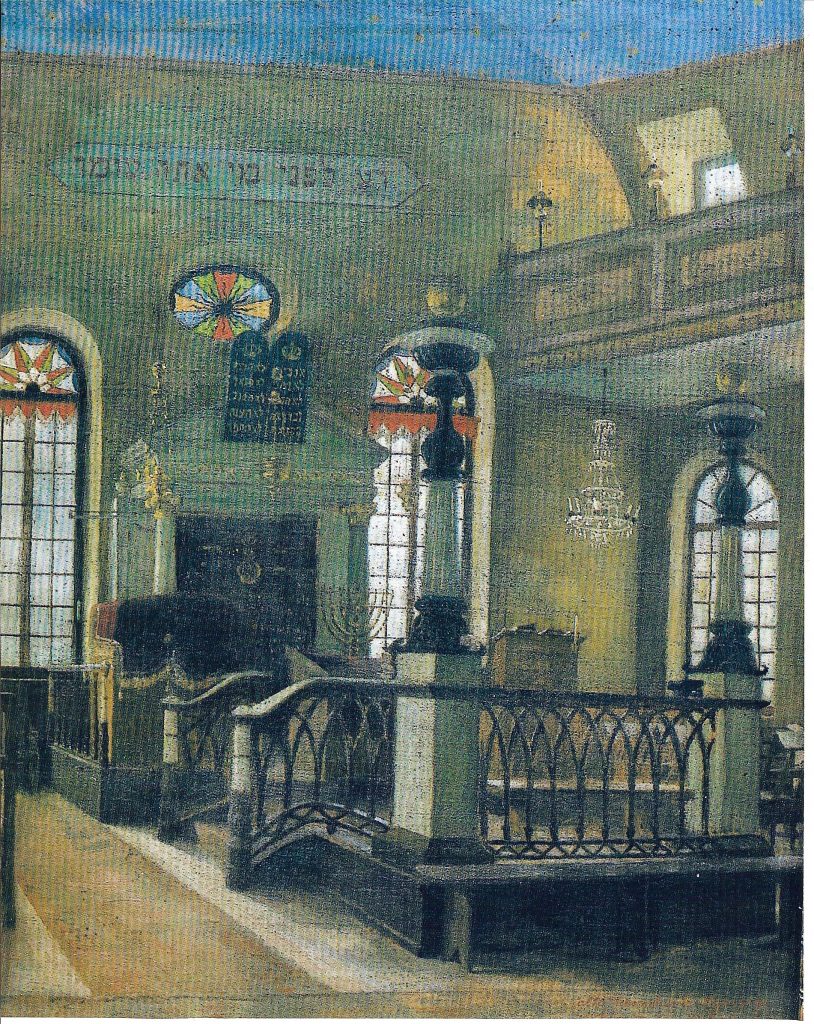
How was the decision made to rebuild the synagogues of Luxembourg and Esch?
In the aftermath of the Second World War, the Jewish Community of Luxembourg was devastated: a third of its population on May 10, 1940 disappeared in the storm. For those who, hidden somewhere in Europe have survived, for others who have emigrated across the seas and who return to the country, the essential concern, in a country devastated by war where the accounts between patriots and collaborators of the Nazi regime, is to rebuild a family and professional life, to find its marks. The synagogues of Luxembourg and Esch having been destroyed by the Nazis, a Consistory quickly constituted with at its head Mr. Edmond Marx, Vice-President of the Pre-War Consistory, set to work to find a Religious Center. The state is ready to help, but in view of the destruction, it is urgent and the religious project is not a priority. Negotiations for a new location, plans and funding will take 8 years. During this transitional period, a room for worship was rented in the Stock Exchange building. The synagogue, resolutely modern and designed to also serve as an Administrative Center, was inaugurated on June 28, 1953.
In Esch sur Alzette, it is also in a very modern style, adorned with superb stained glass, that with the financial aid of the State, the commune and the Office for war damages, the rebuilt synagogue was inaugurated on October 17, 1954.
Can you tell us about your project concerning Jewish cultural heritage in association with the Luxembourg Ministry of Culture in the UNESCO zone?
Since 1994, the fortress of the City of Luxembourg and its old districts have been part of the cultural heritage of UNESCO. In collaboration with the Israel Consistory, a Jewish heritage itinerary project should soon highlight the historical past of the Jewish community, talk about Jewish businesses, and the social impact of that community. The aim of the walk will be to show that the history of the Jewish community is an integral part of that of the country and an important part of UNESCO’s world heritage. The visits are intended to recall to what extent the Jewish presence represents a cultural and entrepreneurial enrichment for society.
Famous personalities from the Jewish Community, shops, monuments, commemorative places will be evoked during this guided tour by the Izi travel app in French, German, Dutch, English and Luxembourgish. One of the highlights of the visit will be the “Kaddish” monument, created by French-Israeli artist Shelomo Selinger.